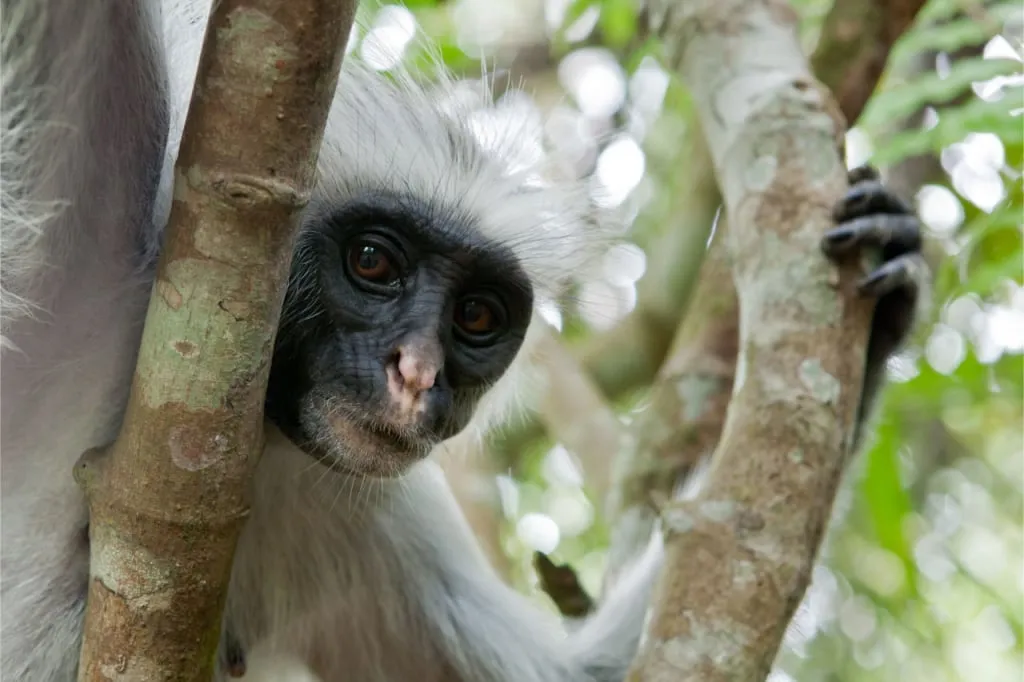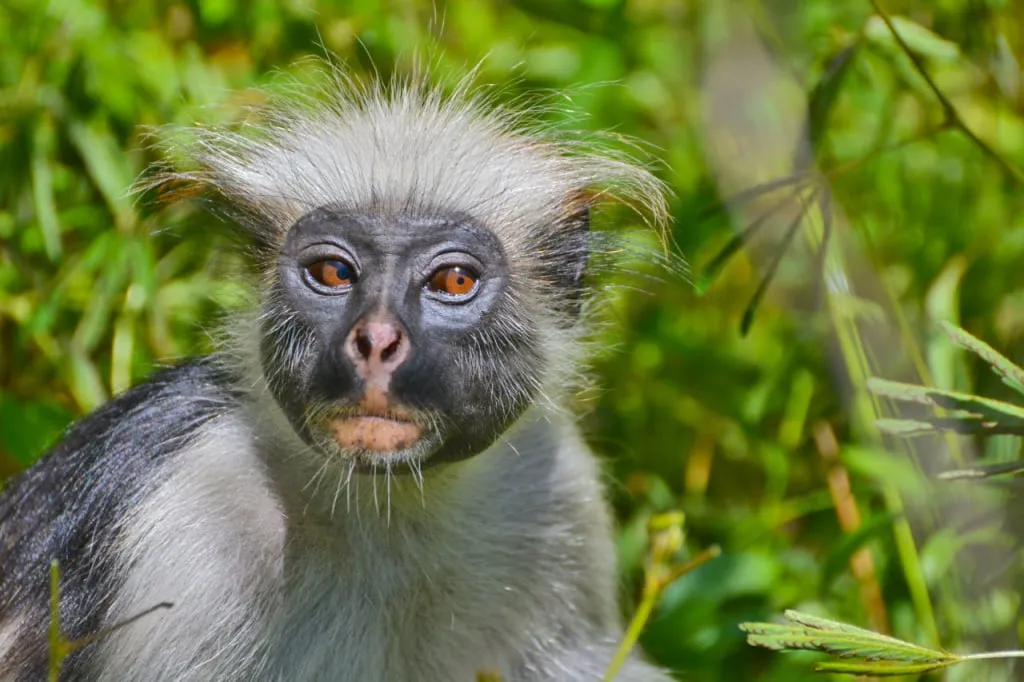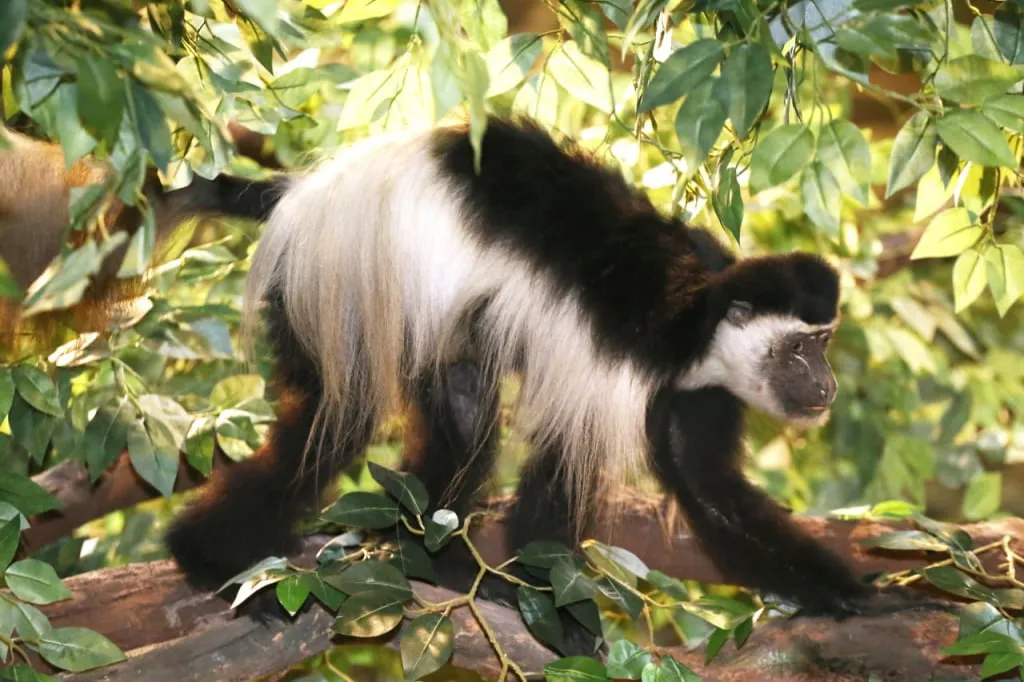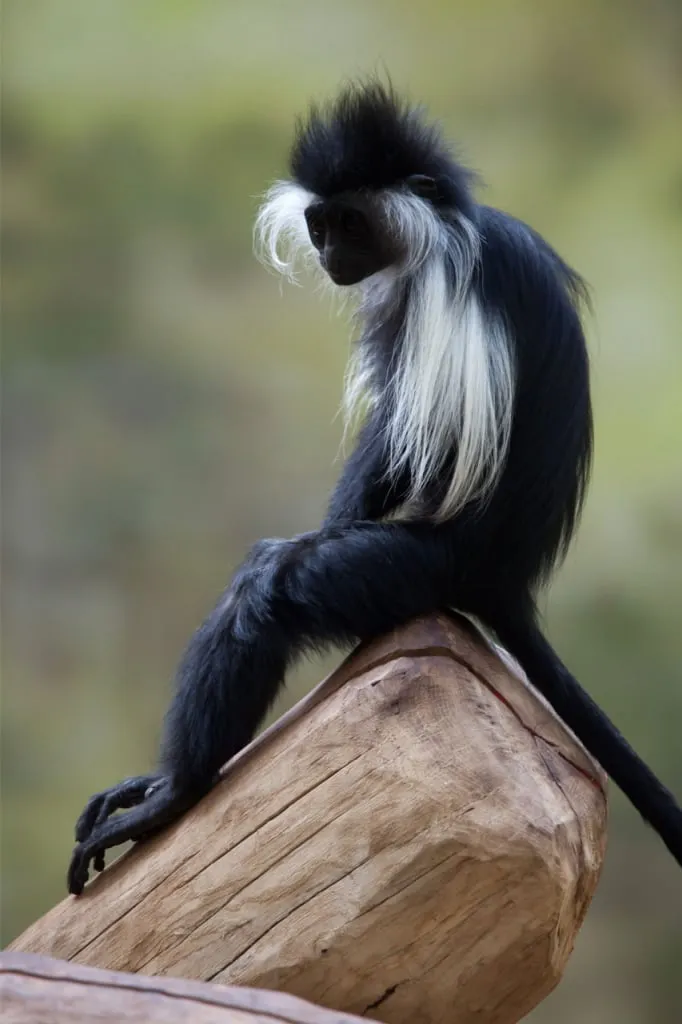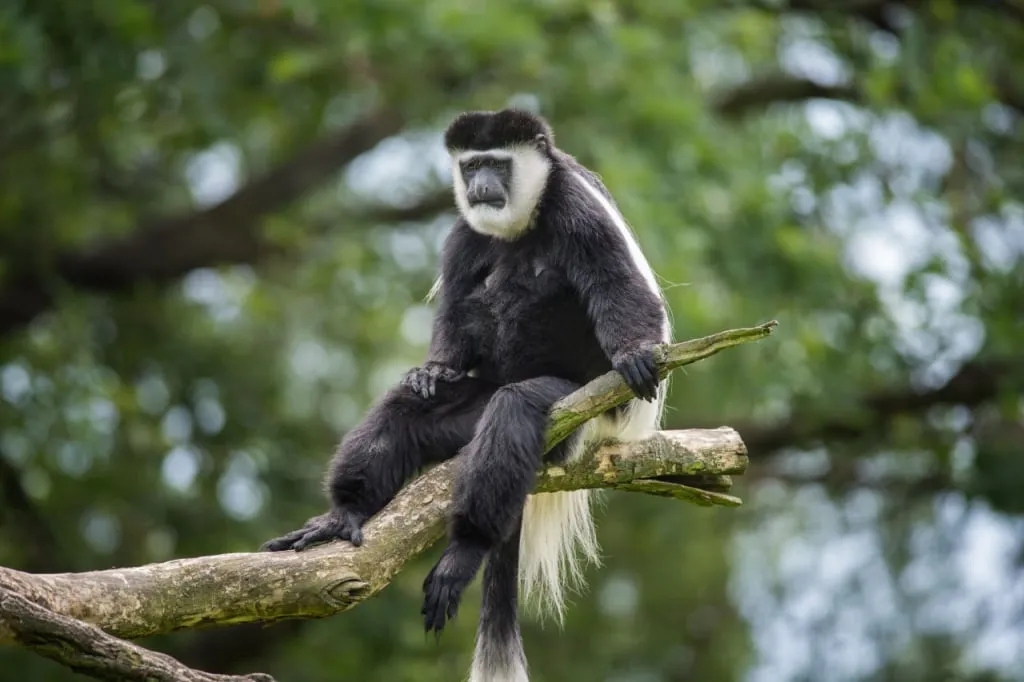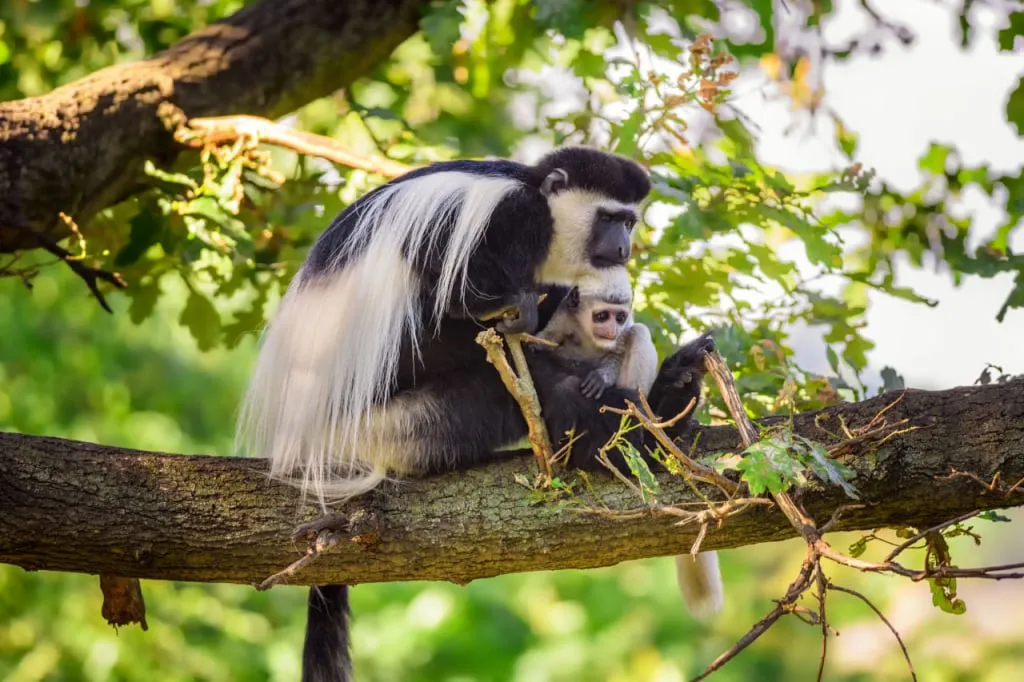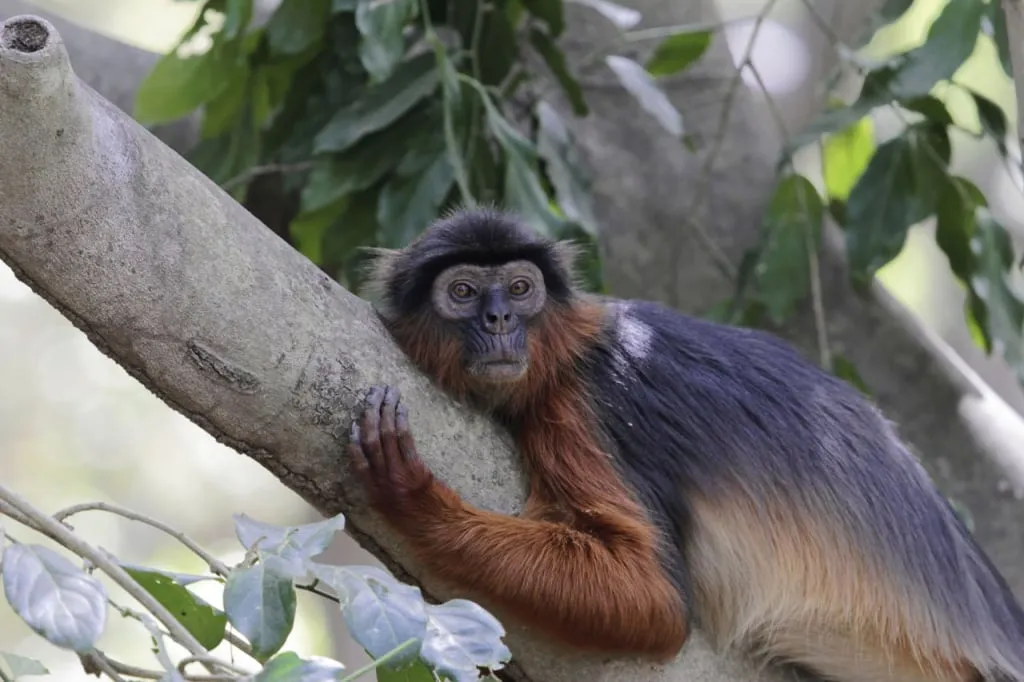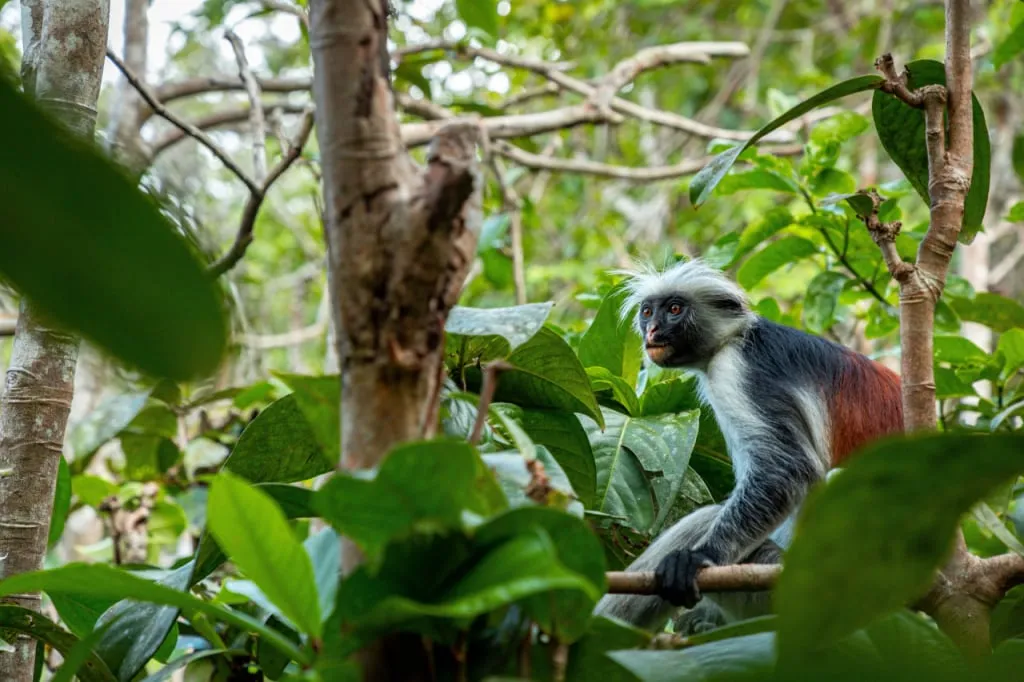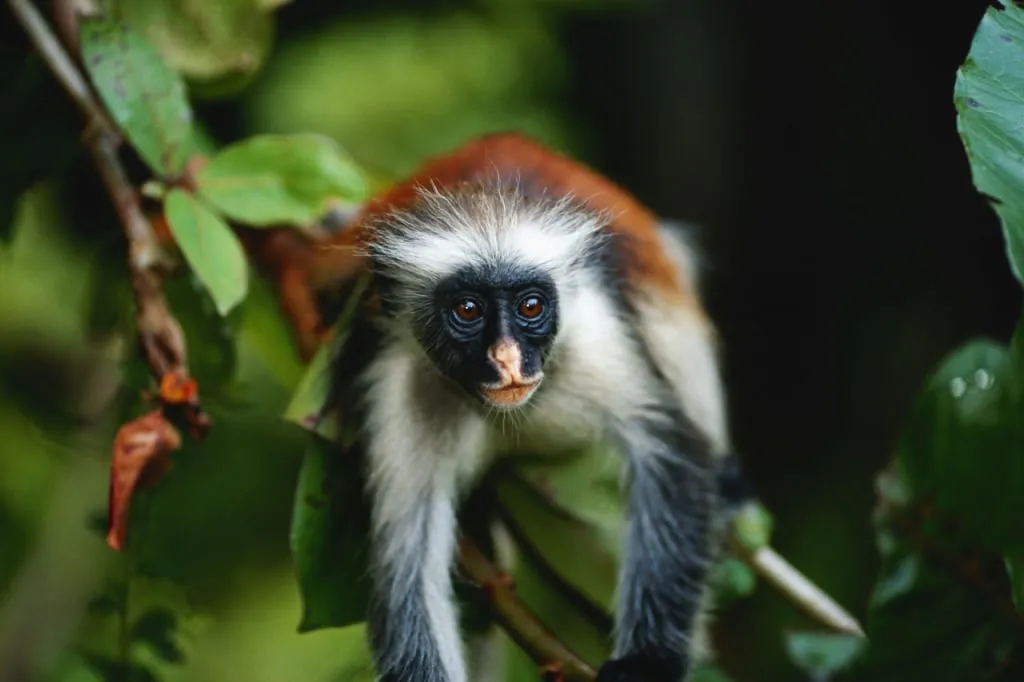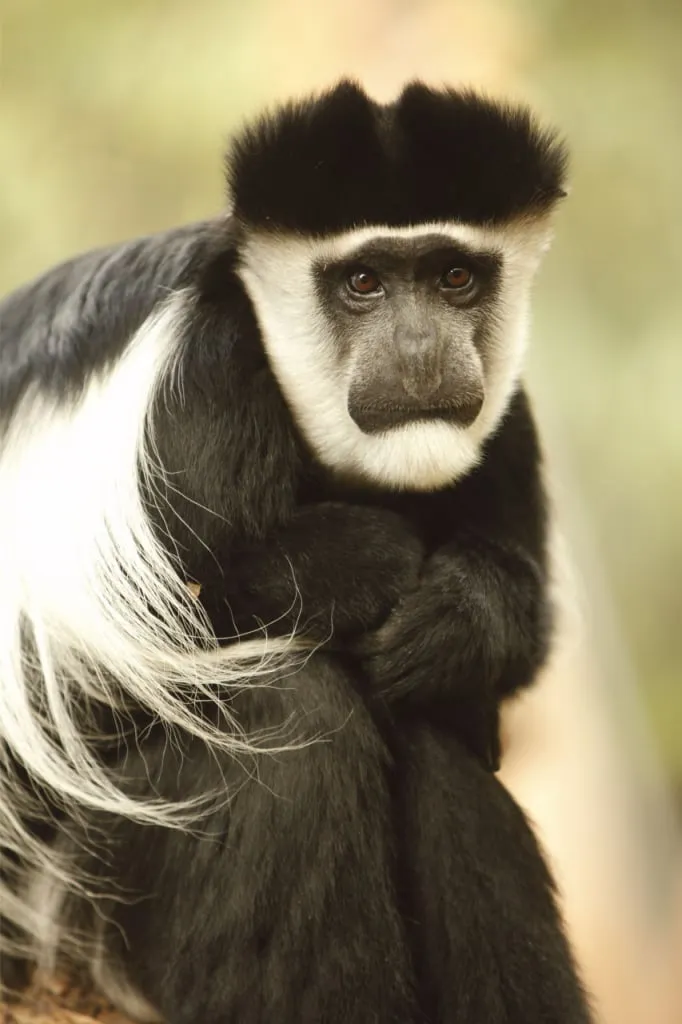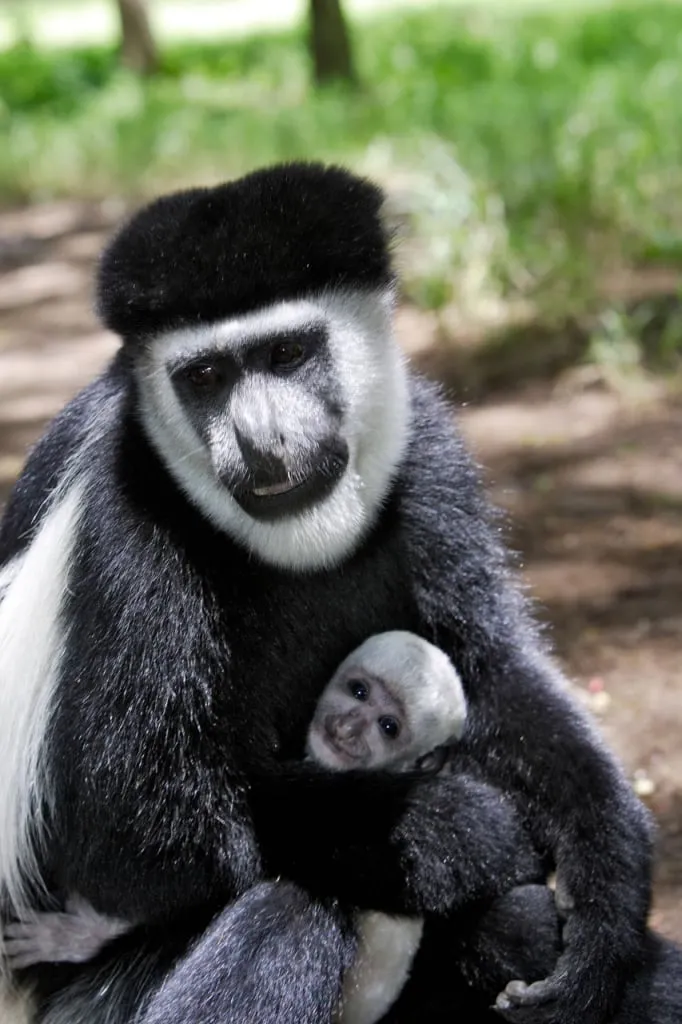We live in Africa and take pleasure in observing a wide variety of animals, many of which are strikingly beautiful and possess intriguing characteristics and habits. In this article, we explore:
- What are colobus monkeys, and how do they differ from other monkeys?
- Why are they called "colobus," a term that means "mutilated"?
- What is the purpose of their long fur, and are all colobus monkeys black and white?
- Who are the famous red colobus monkeys and are they really red?
- What threats do they face in their habitat?
- Where and how can one see colobus monkeys?
Top 5 fascinating facts about colobus monkeys
Africa is home to incredibly beautiful monkeys with long, black-and-white fur, fluffy tails, and endearing faces featuring broad, protruding noses, which might make them appear either surprised or sad. One striking feature that sets them apart from all other primates is their lack of a fully developed thumb; instead, they have a small appendage. This unique trait gave these monkeys their name, "colobus," as the Greek word "kolobos" (κολοβός) means "maimed" or "mutilated." It's ironic, considering the extraordinary beauty of these monkeys!


Let's explore interesting aspects of colobus monkeys' lives: how they manage daily tasks with their unique fingers, the function and allure of their long fur, intriguing details about their diet, an overview of the various species and their habitats, and tips on where to observe them in the wild.
The little thumb. Deformity or advantage?
When you see colobus monkeys in their natural habitat, you wouldn't think there's anything unusual about their hands. These agile tree-dwellers leap from branch to branch over great distances, keeping up with their fellow primates. What's even more fascinating is that they are considered the most arboreal among all primates, spending most of their lives in the trees and only coming down to the ground in extreme situations when there's no other way through the treetops.
The unique big thumb is not a deformity but an advantage. The reduced size of the thumb indicates evolutionary adaptations resulting from their tree-dwelling lifestyle. The same kind of changes can be observed in spider monkeys from North and South America.
Since colobus monkeys move along the highest branches and feed exclusively on leaves, fruits, and flowers, they don't need any specialized tools to obtain food. They use their limbs solely to leap from branch to branch and gather vegetation. In this scenario, the opposable thumb, which is common among most primates, simply becomes unnecessary for them.
Colobus monkeys enjoy sitting or semi-lying on the branches but never hang from them. When they eat, they do so from the top of the branch, using their hands to pluck the leaves. So, once again, they have no use for a big thumb in this context. It's all interconnected: the shape of their hands, their habitat, the way they move around, and their diet.
Unusual diet and strong stomaches
Why do colobus monkeys rarely descend to the ground, spending so much time in the trees? During the times when various animals were actively spreading in Africa, they had to compete for space and limited resources. The genera and species of monkeys were growing, with one group displacing another. Colobus monkeys climbed higher and higher in the trees, where the competition was less, and at the same time, they were looking for food that other primates did not claim - poisonous plants. This is how they adapted to the existing conditions.
Colobus monkeys have a complex and unusual digestive system - food is processed in their foregut, even before it reaches the further parts of the intestine. Their stomach is multi-chambered. When entering the foregut, tough and poisonous leaves are processed by bacteria and go through a detoxification process. Then they move on already neutralized, going into the intestine without toxins.
Colobus monkeys are the only primates capable of consuming poisonous plants without harming themselves. Similar adaptations can be found in the stomachs of sloths, kangaroos, and some ruminants. For instance, the South American hoatzin bird is renowned as the "stinkbird" due to its distinctive smell caused by the fermentation process in its crop. However, colobus monkeys, thanks to their internal digestion, do not produce any unusual odors.
Furthermore, the complex multi-chambered stomach provides them with several other advantages: their fiber digestion is more efficient than in other monkeys, and they extract more protein from their food. As a result, these beautiful, furry creatures consume more leaves and obtain greater energy from them.
Luxurious fur
Such beautiful creatures are hard to find: long fur, huge fluffy tails, and striking black-and-white patterns. And how gracefully they sit atop the treetops! True kings of the upper canopy in the African forests.
There are three genera of those monkeys: black-and-white colobus (genus Colobus), red colobus (genus Piliocolobus), and olive colobus (genus Procolobus). There are six species within the Colobus genus (and potentially more if some subspecies are classified as separate species), and all of them share the primary color of their fur - black. Perhaps the two most prominent representatives of black and white colobuses are the Mantled guereza (Colobus guereza) and the Angola colobus (Colobus angolensis)
White fur frames the faces of these species and descends from their shoulders to form a mantle on their sides. Their tails are also white: in Angola colobus, their tails can be either black or white, but the tip is always white, while in Mantled guereza, the entire fluffy lower part of the tail is snow-white. It's truly impressive to see their magnificent, drooping tails as they sit high up in the trees, calmly observing their surroundings while having a meal.
The length of the fur varies from species to species and depends on the habitat. Overall, colobus monkeys prefer the so-called gallery forests of tropical Africa and mangrove thickets. They are also seen in meadows covered with trees, including bamboo and eucalyptus plantations. They live in mountain forests at elevations of up to approximately 3300 meters (about 10,826 feet). The higher above sea level the colobus monkeys live, the longer their fur. At higher altitudes, the air temperature is lower, so they need protection from the cold.
Since the late 19th century, there has been a debate about the existence of a distinct population of black-and-white colobus monkeys in the forests of Mount Kilimanjaro, Mount Meru, and their surrounding areas. Researchers who classify them as a separate species give them the name Mt. Kilimanjaro guereza (Colobus caudatus). They perhaps have the longest fur and the most luxurious tails.
In 2020, the International Union for Conservation of Nature and Natural Resources finally announced their classification as a separate species. The reasons included the distinctive skull structure, different from all other species, isolation of the area from the habitats of other subspecies of the Mantled guereza, and a reduction in the species population, which has been given the status of being in a vulnerable position. In Tanzania, more than 10,000 individuals of the Mt Kilimanjaro guereza are counted, and in a couple of small forest reserves in neighboring Kenya, there are only about 200.
Colobus monkeys acquire such impressive fur length and coloration with age. Newborn monkeys are completely white, and only their faces are pink. By three months, their fur becomes black and takes on other shades characteristic of other species.
As often happens with bright animals whose fur, skin, or feathers are so appealing to people, colobus monkeys have suffered from excessive attention. Their fur was used for trimming coats, capes, hats, and dance costumes. Colobus monkeys were hunted in the forests and killed; their skins were shipped by . By the beginning of the 20th century, several subspecies of black-and-white colobus monkeys had been exterminated. Fortunately, the fashion for monkey fur waned a hundred years ago, and the mass trapping of colobus monkeys ceased. Even today, they are hunted in African forests for their beautiful fur, which is sold on the black market.
Not all colobus monkeys are black and white
In Africa, you can find not only black and white colobus monkeys but also ones with reddish and reddish-brown fur, and even olive-green shades. Colobus is a name for many types of monkeys. Besides the actual genus Colobus, this tribe of Old World monkeys called Colobini includes two more genera: Piliocolobus and Procolobus.
As we mentioned above, all colobuses can are divided into three genera:
- Black and white colobuses;
- Red colobuses;
- Olive colobuses (there is only one species in this genus).
There are more than 20 species, and among scientists, there are discussions about how to classify certain monkeys. In the first genus there are 5 or 6 species, in the last one only one – the olive colobus monkey, and then there are about twenty species of red colobus.
The fur of the olive colobus is green-olive or brown in color. Most of the so-called black-and-white colobus monkeys live up to that name, although only two or three species have white mantles and tails, and the others only have white markings on various parts of their body, often around the face and at the tip of the tail. Only the black colobus (Colobus satanas) does not have any white markings on its body, remaining entirely black, with fur slightly lighter around the face.
The species of red colobus can be tricolored: in addition to black and white colors, their fur is also dyed in various shades of brown, orange, or reddish, and often gray. For example, Zanzibar red colobus (Piliocolobus kirkii) has a red or reddish back. It was named after the Scottish naturalist John Kirk, who explored the animals and plants of East Africa, including Unguja Island (Zanzibar).
Zanzibar red colobus inhabits the only remaining forest in Zanzibar. Currently, their population numbers are less than 6000 individuals, and they are classified as an Endangered species. Efforts were made to relocate them to the neighboring island of Pemba, but the population couldn't increase due to conflicts with humans. Superstitious farmers killed the animals, believing they brought bad luck.
In general, although the number of colobus monkeys killed by humans has reduced compared to the 19th and 20th centuries, the loss of their habitat remains a significant threat. People are actively clearing forests, which are the cherished and familiar shelters of these monkeys.
Who hunts the colobus monkeys?
Who else threatens them besides their main enemy, humans? In the wild, predators such as leopards, chimpanzees, and large birds prey on these monkeys. For example, it's been noticed that the Mantled guereza often falls victim to Сrowned and Verreaux's Eagles.
When settling down for the night on branches in the middle and upper parts of the forest, black-and-white colobus monkeys sleep quite alertly, preventing predators from getting too close. On bright moonlit nights, they can sleep more soundly, but in the dark, they'll be more tense, signaling alarms to the other members of the group if danger is present.
You can easily identify colobus monkeys by their sound—they often emit a recognizable roar in the forest. It carries over the trees in the mornings or at night for up to one and a half kilometers (almost one mile). Males usually use this to show group members where they are, as well as to warn other groups so their feeding territories don't overlap. In case of danger, colobus monkeys produce snorting sounds or a squeal and deafeningly high screams if the females and juveniles are worried about one of the group's young.
When a predator begins to attack, the alpha male jumps and growls, drawing attention to himself and allowing the other members of the group to quickly hide in a safe direction. If necessary, colobus monkeys can cover impressive distances of several meters (several yards) in a jump, leaping from branch to branch.
Where to see colobuses in the wild?
Colobus monkeys have a wide range of habitats: they live in the tropical belt of Africa, from Senegal in the west to Ethiopia in the east, spreading south to Angola and Zambia, and also encompassing certain regions of Tanzania.
For instance, the Angolan colobus monkeys are found not only in Angola but also across most of the Democratic Republic of Congo, in Rwanda and Burundi, in small populations in Kenya and Zambia, and in a large belt in Tanzania.
Mantled guerezas live in Nigeria and Cameroon, in several Central African countries, extensively in Ethiopia and Kenya, and also in northern Tanzania.
If we consider the Kilimanjaro colobus as a separate species, it's worth mentioning that they only live in a specific area in northern Tanzania and in two small populations in Kenya. Their main habitat, as the name suggests, is near Mount Kilimanjaro, as well as in the forests of the neighboring Mount Meru.
We've highlighted the habitats of the most beautiful colobus monkeys, characterized by long fur and expressive black-and-white coloring. You can spot these species of colobus in Tanzania, going on a safari trip to East Africa, for example, by visiting Kilimanjaro and Arusha National Parks.
We also have great news for animal lovers and safari travel enthusiasts: if you've planned a trip to Serengeti and Ngorongoro, the most popular reserves in Tanzania, you don't necessarily have to spend time visiting less popular national parks to see black-and-white colobus. They live in the trees in some green areas around the cities of Arusha and Moshi.
If you're keen on seeing colobus monkeys during your safari with Altezza Travel, let our managers know, and we'll lodge you upon arrival in Tanzania in hotels where you can observe these monkeys, simply by walking from your cottage to the restaurant.
We ourselves see them every time we stay in hotels in the Usa River area near Arusha, and we never cease to admire the beauty of black-and-white colobus monkeys, jumping through the trees right above our heads.













